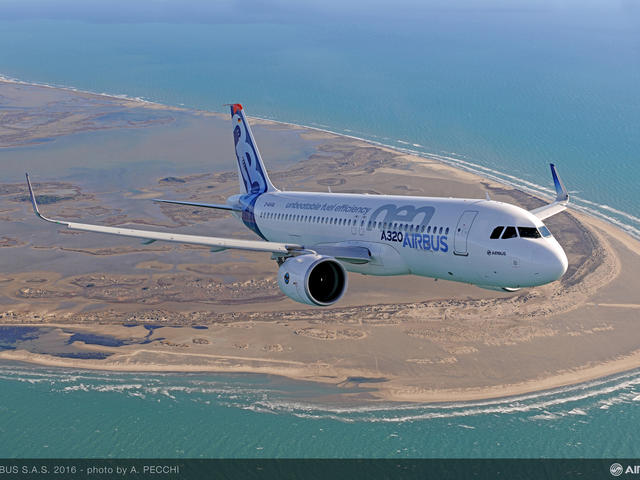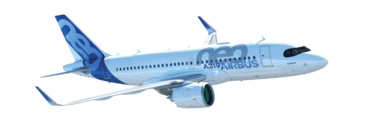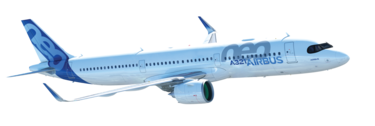The Benchmark
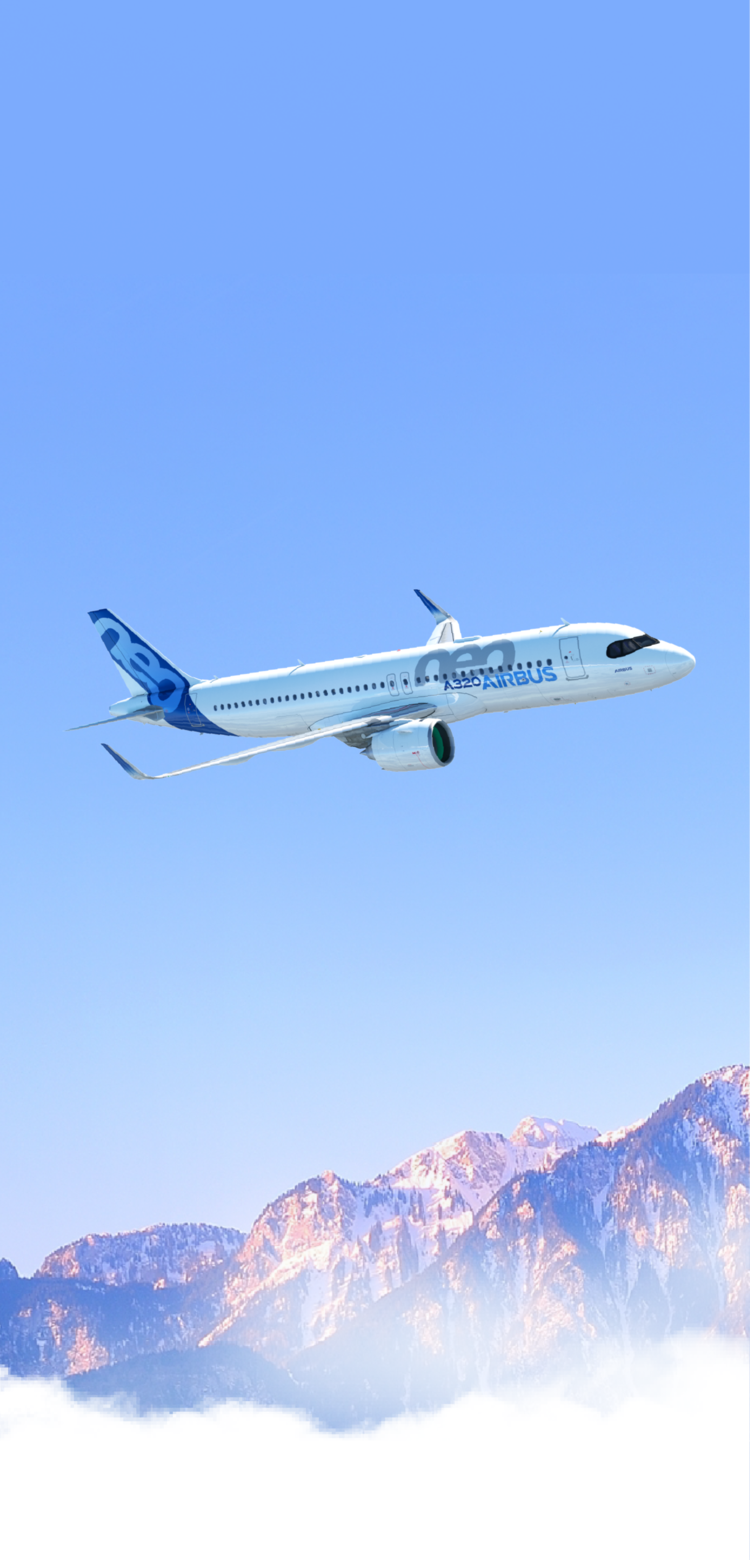
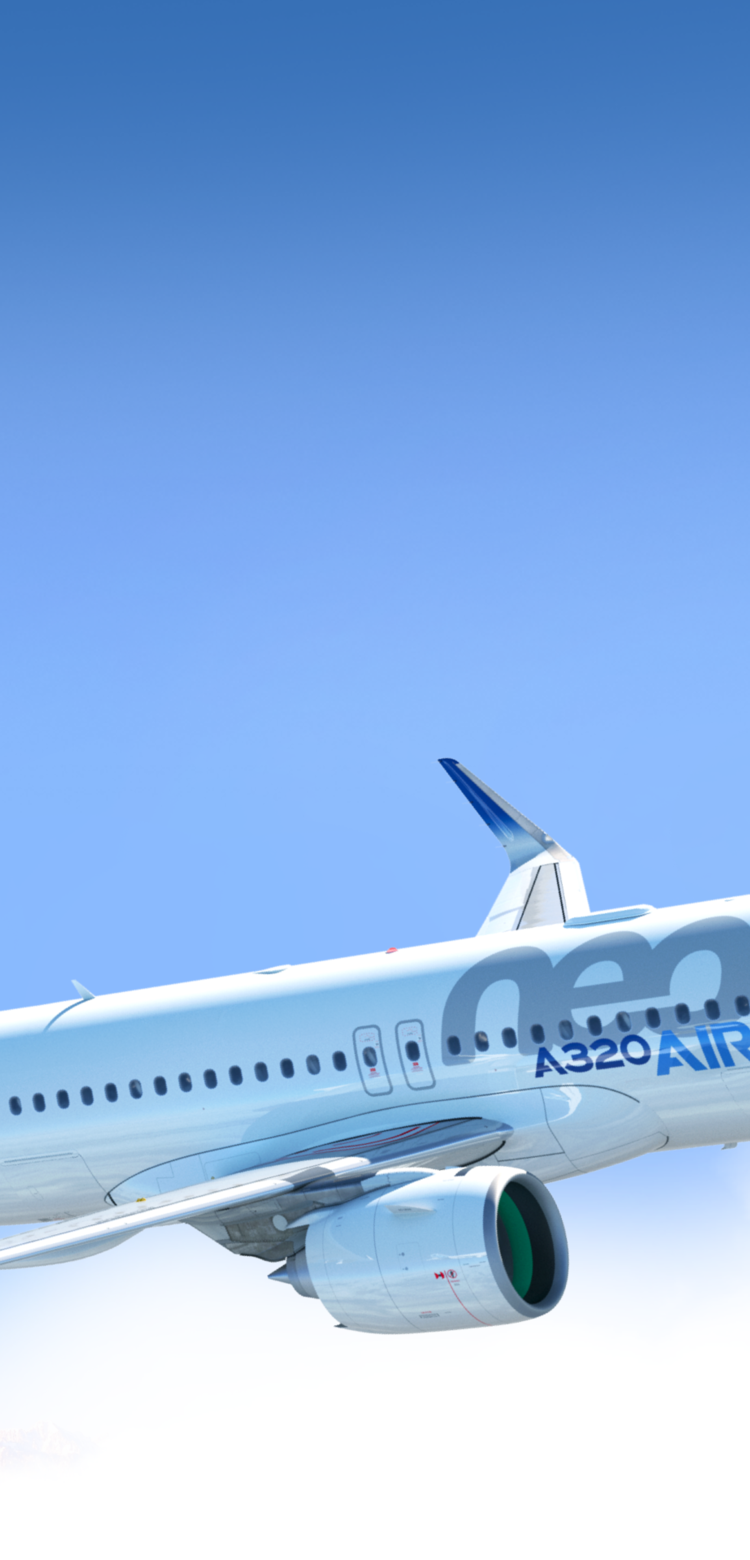
- Unbeatable efficiency
- Superior passenger experience
- Commonality across the A320 Family
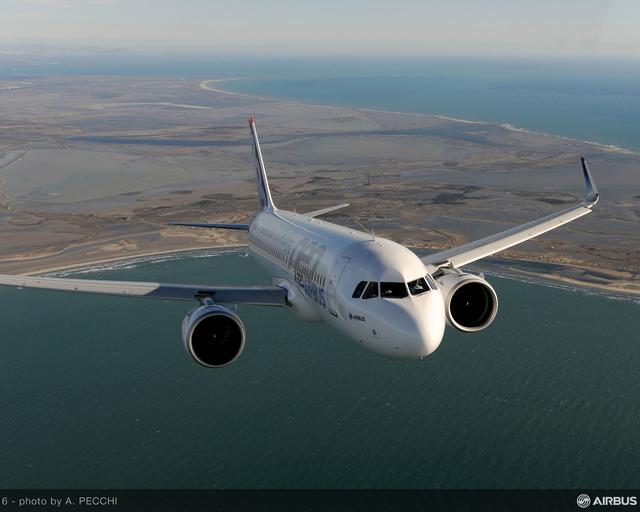

The cornerstone member of the A320 Family
The A320neo flies up to 3,400 NM and delivers 20% less fuel burn and CO2 emission per seat* thanks to its fuel efficient engines. Equipped with the most versatile cabin, it can fit up to 194 seats at maximum capacity. The Airspace cabin offers a superior passenger experience with extra personal space, wider seats and XL bins.
Also flying Sustainable Aviation Fuel (SAF), airlines can operate with a 50% SAF Blend today and 100% by 2030.
*vs previous generation


A320neo: The best is even better
With one of the widest single-aisle cabin in its class, passengers aboard the A320neo enjoy more personal space, wider seats, and generous overhead compartments to store their luggage. The onboard environment is further enhanced with Airbus’ Airspace cabin, which was first incorporated in the company’s A330neo and A350 widebody jetliners.
Explore the A320neo range
A320neo range

Key figures
A320neo
Capacity
- Pax Max seating
- 194 seats
- Typical seating 2-class
- 150-180 seats
- Cargo LD3 capacity underfloor
- 7 LD3-45W
- Max pallet number underfloor
- 7 pallets
- Water volume
- 44 m³
- 1 556 ft³
Performance
- Range
- 6 300 km
- 3 400 NM
- Mmo
- M0.82
- Max ramp weight
- 79.40 tonnes
- 175.00 lb x 1000
- Max take-off weight
- 79.00 tonnes
- 174.20 lb x 1000
- Max landing weight
- 68.40 tonnes
- 149.91 lb x 1000
- Max zero fuel weight
- 65.30 tonnes
- 143.30 lb x 1000
- Max fuel capacity
- 26 730 litres
- 7 060 USG
Dimensions
- Overall length
- 37.57 m
- 123 ft 3 in
- Cabin length
- 27.51 m
- 90 ft 3 in
- Fuselage width
- 3.95 m
- 13 ft 0 in
- Max cabin width
- 3.70 m
- 12 ft 1 in
- Wing span (geometric)
- 35.80 m
- 117 ft 5 in
- Height
- 11.76 m
- 38 ft 7 in
- Track
- 7.59 m
- 24 ft 11 in
- Wheelbase
- 12.64 m
- 41 ft 5 in
Discover all the ways we support you
A320neo services
-

FHS
Airbus Flight Hour Services is a material & maintenance service based on a contractual fixed hourly-rate payment.
-

Skywise
The industry data platform [ purpose-built ] to address Aircraft Operations Challenges.
-
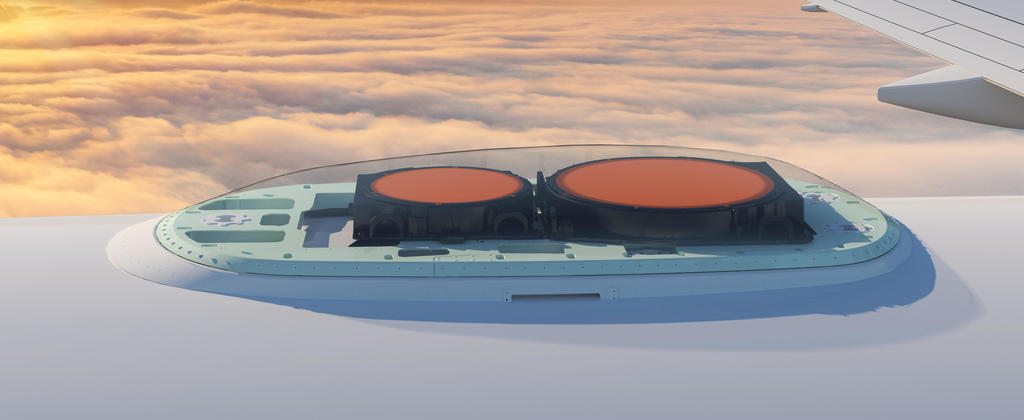
HBCplus
High Bandwidth Connectivity Plus (HBCplus) A flexible multi orbit offboard connectivity solution.
More questions?
FAQ
What is the range of the A320neo?
The A320neo flies up to 3 400 nm / 6 300 km.
What can passengers expect inside the A320neo?
Airbus’ award-winning Airspace interior concept brings a totally new definition of cabin comfort on the A321neo. It features customisable lighting, integration of new slimmer sidewall panels for extra personal space at shoulder level; better views through the windows with redesigned bezels and integrated window shades; the latest full LED lighting technologies and the largest overhead bins for single-aisle jetliners.
How many passengers can fly in the A320neo?
The maximum capacity of Airbus A320neo is 194 passengers.
What is the difference between the A320ceo and the A320neo?
The A320neo brings at least 20% fuel and CO2 savings per seat compared to its predecessor thanks to various improvements such as Sharklets, new engines and cabin enablers.
Discover the rest of the A320 Family.
Our Aircraft



